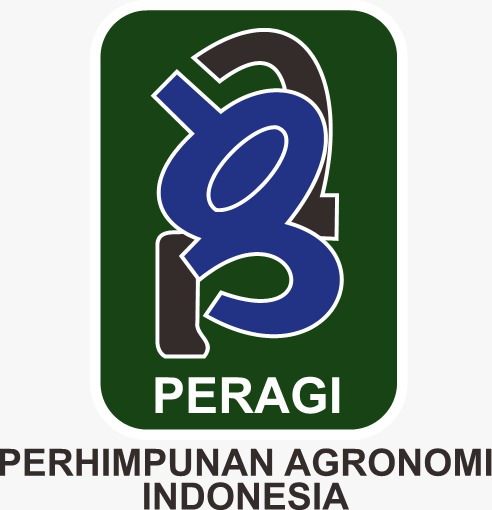Tolerance of Upland Rice Genotypes from Deli Serdang North Sumatra to Drought Stress Condition
Abstract
Drought is the main problem that is often faced in upland rice cultivation in the dry land. Therefore, drought-tolerant rice varieties are needed, but until now, the number is very limited. It is crucial to produce drought-tolerant rice because Indonesia has a relatively sizeable dry land of 148 million ha. This study aimed to obtain a genotype of upland rice that is tolerant to drought with high productivity and can be developed in the dry land. This research was then continued with drought tolerance testing by giving water below field capacity in a greenhouse. This study was in a factorial form using a Split Plot Design, with the main plot of drought stress treatment consisting of tree levels, namely water availability field capacity water, field capacity water, and field capacity water. The sub-plots were four genotypes of upland rice from Deli Serdang North Sumatra consisting of Sialus, Arias, Silayur, Sirabut and one drought-tolerant variety for comparison is Inpago11. The observed variables included plant height, chlorophyll content, number of tillers, number of productive tillers, age of flowering, harvest period, grain weight per clump, and weight of 100 grains. The heaviest drought stress (FCW) caused a significant decrease in plant height, number of tillers per clump, number of productive tillers, and grain weight per clump and extended the flowering and harvesting ages. Based on the tolerance index criteria, it was found that the Silayur genotype was more tolerant to drought stress than the other upland rice genotypes.
Downloads
Copyright (c) 2023 Noverina Chaniago Chaniago, Rahmad Setia Budi, Nurhayati Nurhayati, Indra Gunawan Gunawan

This work is licensed under a Creative Commons Attribution 4.0 International License.
Authors who publish with Jurnal Agronomi Tanaman Tropika (JUATIKA) agree to the following terms:
Authors retain copyright and grant the Jurnal Agronomi Tanaman Tropika (JUATIKA) right of first publication with the work simultaneously licensed under a Creative Commons Attribution License (CC BY 4.0) that allows others to share (copy and redistribute the material in any medium or format) and adapt (remix, transform, and build upon the material for any purpose, even commercially) with an acknowledgment of the work's authorship and initial publication in Jurnal Agronomi Tanaman Tropika (JUATIKA).
Authors are able to enter into separate, additional contractual arrangements for the non-exclusive distribution of the journal's published version of the work (e.g., post it to an institutional repository or publish it in a book), with an acknowledgment of its initial publication in Jurnal Agronomi Tanaman Tropika (JUATIKA). Authors are permitted and encouraged to post their work online (e.g., in institutional repositories or on their website) prior to and during the submission process, as it can lead to productive exchanges, as well as earlier and greater citation of published work.







 More Information
More Information


